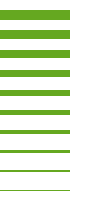https://doi.io-warnemuende.de/10.12754/msr-2000-0038
doi:10.12754/msr-2000-0038
© Author(s) 2000. This work is distributed
under

Dieses Werk ist lizenziert unter einer Creative Commons Namensnennung - Nicht kommerziell - Keine Bearbeitungen 4.0 International Lizenz.
Trophic status of coastal and open areas of the south-eastern Baltic Sea based on nutrient and phytoplankton data from 1993 - 1997
Abstract. Despite of the high importance of coastal areas for the functioning of the whole Baltic ecosystem and the special socio-economical interest in these regions, an international coastal monitoring programme has been established by the Helsinki Commission (HELCOM) only recently. Data of coastal areas were ascertained, however, in national responsibilities for years. One of the major aims of our work was to compile the basic hydrochemical and phytoplankton (incl. chlorophyll and prilnary production) data and supply them as base-line data for future trend-analyses by the coastal monitoring programme in the HELCOM COMBINE. Data were collected from the Pomeranian Bay, the Gulf of Gdansk, the coastal area in front of Lithuania, and the Gulf of Riga in the years 1993-1997. As large rivers discharge into these areas, the plume waters were considered separately. The coastal data were compared with data from the open Baltic Sea (Arkona Sea, Bornholm Sea, Eastern Gotland Sea). Nutrient concentrations and N:P ratios decreased from the plumes to the open sea. N:P ratios in the plumes were higher than 16 (with some exceptions in summer and autumn), indicating potential P-limitation of phytoplankton growth, whereas they were lower than 16 in the open Baltic Proper, indicating potential N-limitation. In the Gulf of Riga, a decrease in N:P ratios was noticed in the course of our investigations. The highest chlorophyll a concentrations were found in the inner parts ofthe Pomeranian Bay (5-years-mean = 9.4 mg m-3) and the Gulf of Gdansk (5-years-mean = 11.2 mg m-3). The mean chlorophlyll a concentrations in central regions of the Baltic Prober were 2.4 - 2.6 mg m-3. Water transparency (Secchi depth) was inversely related to clorophyll a. Secchi depth rarely exceeded 4 m in the plumes but was 5-15 m (annual menas 8-10 m) in the open sea. Primary production was in general higher in the plumes than in open waters. Exceptions were found in very turbid plumes, where in situ primary production was sometimes lower than in the open waters because of light limitation. Big differences in species composition exist between coastal and open waters, mainly due to salinity differences. Most of the dinoflagellates are marine species, whereas Chlorophyceae may serve as indicators for fresh-water influence. Special attention was paid to the spring blooms - an important feature in temperate sea. The earliest spring blooms, mainly composed of diatoms, developed in coastal areas and the western Baltic Sea in February to April. In the Eastern Gotland Sea, the spring blooms (mainly dinoflagellates) grew only in April or May. The spring bloom starts after the stabilisation of the water column. This stabilisation, mainly due to thermal stratification, takes much more time in the deeper central regions than in shallow waters (temperature hypothesis). The different timing and species composition of the spring blooms can also be explained by the alternative "seeding hypothesis": Due to isolation of the deep water by the permanent halocline, a passive upwards transport of diatom cysts may only occur in shallow coastal areas. The central areas of the Baltic Sea have to be seeded by advective currents. Due to long distances to the central basins of the Baltic Sea, diatom blooms develop late or fail completely here. Dinoflagellates benefit from the loss of diatoms. In the 1990s, a long-term tendency of replacement of diatoms by dinoflagellates became obvious in the central Baltic Proper. Also this phenomenon can be explained by the temperature and seeding hypotheses. On the basis of the phytoplankton primary production and biomass data the big plumes of the south-eastern Baltic Sea could be characterised as eutrophic while outer parts of the coastal waters and the open sea are mesotrophic.
